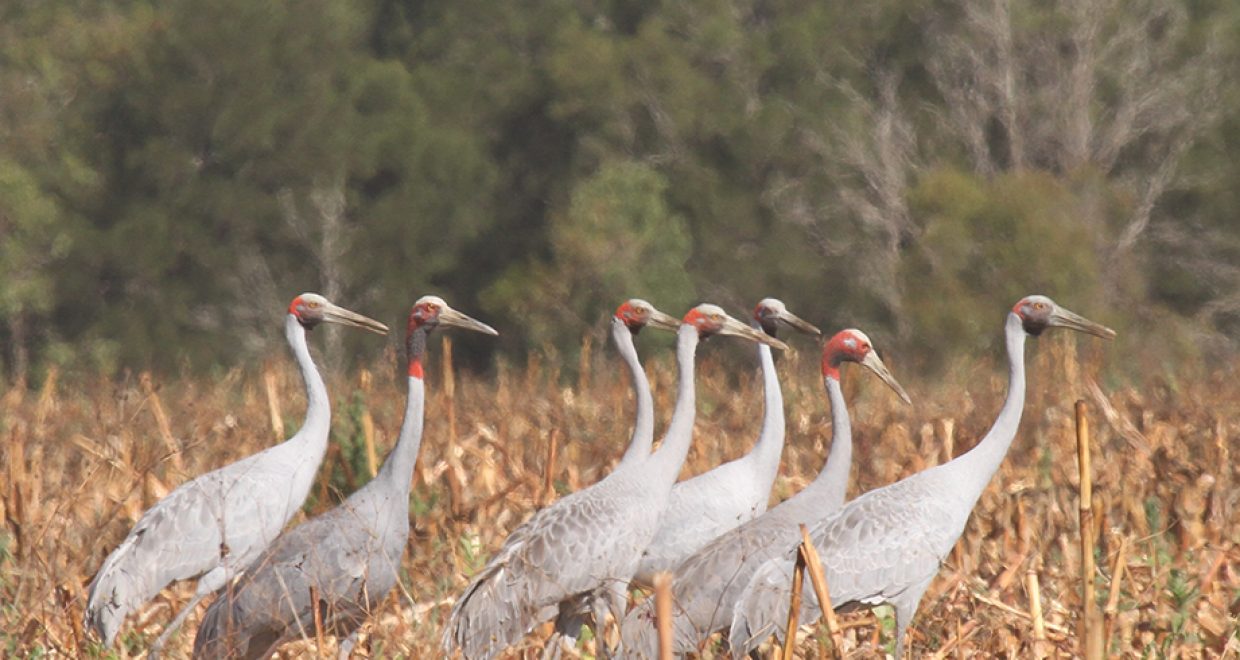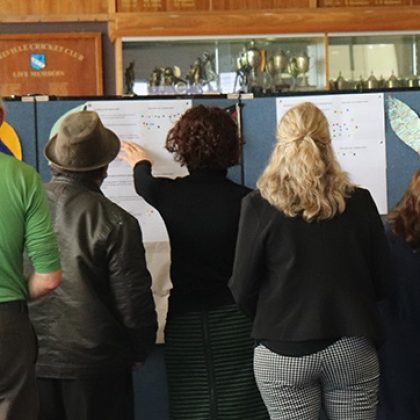Dances with cranes: the rise of the Sarolga
The Buralga legend tells of an Australian Aboriginal woman famed for her dancing, who was turned into a brolga by a jealous magician. Since then, cranes have made and reinforced their pair bonds by dancing with their chosen mate. Using a combination of observational and genetic techniques, an international team of researchers has established definitive evidence of hybridisation between the culturally iconic brolga and its close relative, the lesser-known Australian sarus crane; probably a result of young cranes meeting lifetime mates from the other species on post-harvest agricultural ‘dancefloors’.

The hybrid between the brolga and the Australian sarus crane has been dubbed the ‘Sarolga’. Despite only comprising just over 2% of crane populations in northern Australia, the Sarolga possesses characteristics of both parent species and may become commoner with the spread of cropping across Australia’s hitherto relatively undeveloped tropics. Research leader, Tim Nevard from Charles Darwin University’s Research Institute for the Environment and Livelihoods (RIEL) commented: “Although we cannot yet be sure, we believe that mixed flocks foraging on agricultural land may facilitate hybridisation, with juvenile brolgas and Australian sarus cranes feeding together and interacting at their critical lifecycle stage for pair-bonding”.

A component of the research published in Oryx involved the collection of shed feathers on both the Atherton Tablelands dry season flocking and Gulf Plains wet season breeding areas of Far North Queensland. George Archibald, co-founder of the International Crane Foundation, stated: “By comparing the genetics of shed feathers, we have obtained definitive evidence to substantiate visual observations of hybridisation”. Martin Haase of AG Vogelwarte at the University of Greifswald, where genetic work was undertaken, expanded, “We found that brolgas and Australian sarus cranes hybridise in the wild at a rate over 10 times higher than visually detectable, as well as backcross, confirming that their hybrids are fertile”. The evolutionary trajectory of the Sarolga remains unknown but evidence from other species, including humans, suggests that only a small number of hybridisation events can have far-reaching evolutionary consequences. Ian Leiper of RIEL remarked, “We don’t yet know if Australia will end up with just one type crane or three…but we’re watching”.

Although brolgas and sarus cranes have been known for some time to breed on the plains adjacent to the Gulf of Carpentaria and to flock on the Atherton Tablelands, there has been no proof of migration between these areas. Tim Nevard added, “Shed feather analysis found the same individuals on both the Gulf Plains and Atherton Tablelands, confirming that cranes migrate across the 500 km that separate them”. There are currently no laws protecting species that migrate within Australia, where internal migrations remain poorly understood. “The genetic analysis of shed feathers could therefore be a technique with widespread application through citizen science projects, providing cost-effective monitoring of not only cranes but other migratory species”, says Stephen Garnett of RIEL.

The sarus crane is under threat in much of its south-east Asian range and as well as hybridisation with brolgas, modelling suggests that climate change could also become a problem for Australian sarus cranes, which may require a new range of conservation measures. “Alongside conservation efforts in the wild, the establishment of a genetically balanced captive group of Australian sarus cranes could therefore help ensure the continued survival of the unique Australian subspecies” — Tim Nevard.


If you would like to read more about this study, the paper ‘The sarolga: conservation implications of genetic and visual evidence for hybridization between the brolga Antigone rubicunda and the Australian sarus crane Antigone antigone gillae’ is now freely available until May 31 in Oryx—The International Journal of Conservation.





